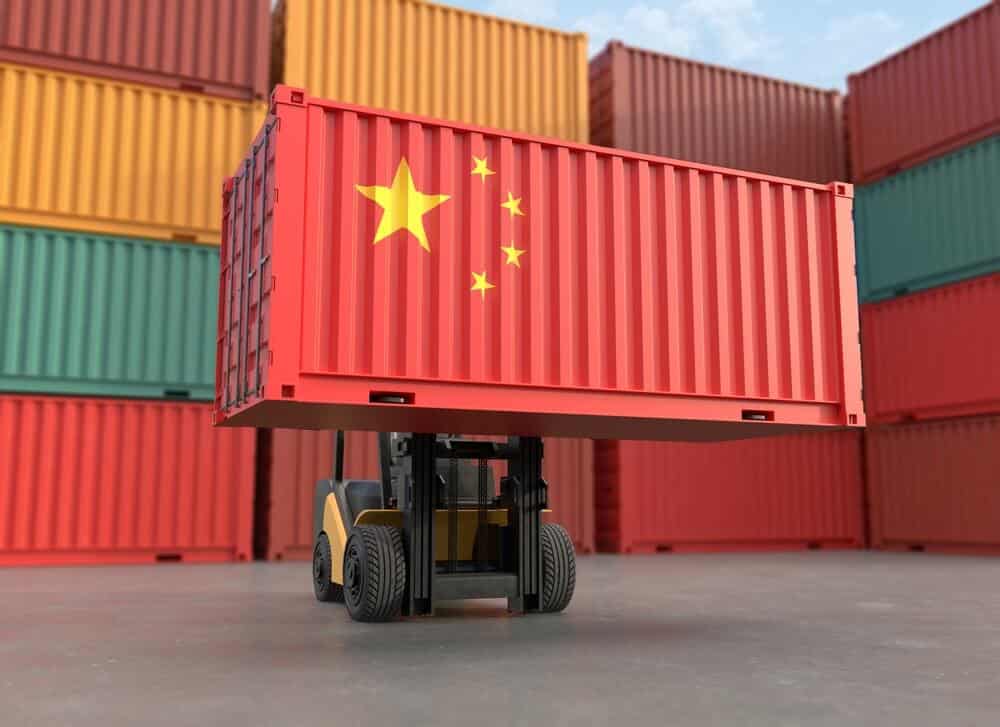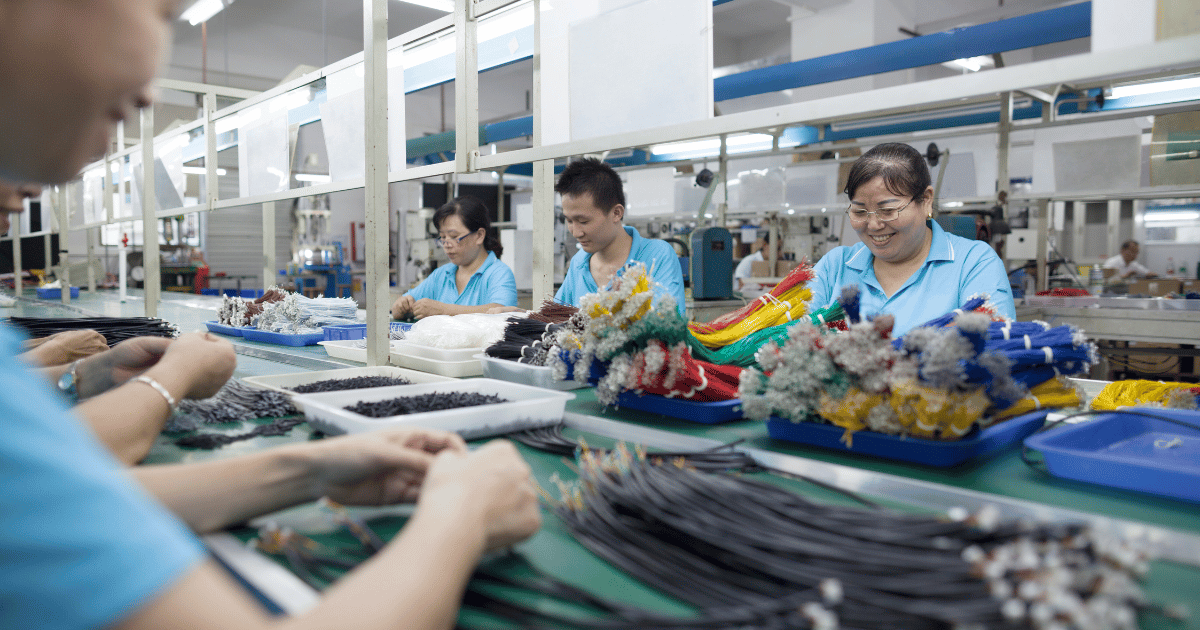Sourcing products from China remains one of the most effective ways to lower per-unit costs, even after considering tariffs, shipping hikes, and currency fluctuations. For many consumer brands, switching to verified Chinese suppliers has resulted in gross margin improvements of 15% to 40% compared to domestic or nearshore production.
But the advantage isn’t automatic. Relying on outdated sourcing methods, unvetted factories, or disjointed logistics can erase those savings and introduce costly delays or quality issues. Whether you’re launching your first SKU or optimizing your existing COGS, sourcing can’t be a guessing game. It has to be a repeatable system.
At Gembah, we help brands turn sourcing chaos into a competitive advantage. From vetting suppliers and managing compliance to coordinating global logistics, our team builds sourcing systems that deliver speed, quality, and cost control without the headaches. Learn more about our sourcing services.
TL;DR
Sourcing from China remains one of the smartest strategic levers for scaling physical product businesses, but only when approached as a system, not a shortcut. The margin gains are real, but so are the risks: poor supplier vetting, unclear specs, and overlooked compliance can wipe out savings fast. With the right process, partners, and controls in place, brands can unlock speed, quality, and cost advantages that competitors relying on directories and guesswork will never match. Gembah helps you build that system, so sourcing becomes an asset, not a liability.
Key Points
- Sourcing from China still delivers 15–30% landed cost savings compared to U.S. or nearshore options, even after tariffs and freight
- 59% of U.S. buyers and 68% of EU buyers plan to maintain or expand China sourcing in 2025
- China’s manufacturing output rebounded, with PMI hitting 50.4 in June 2025 and robot output up 26% year-over-year
- Gembah helps brands build sourcing systems, offering access to 2,000+ vetted factories, supplier validation, compliance guidance, and global logistics coordination
Also Read:

Key Reasons for Sourcing Products from China
1. Cost‑Effectiveness
China is expected to remain a cost leader in 2025. Brands sourcing from China typically achieve 15–30% landed cost savings compared to U.S. or nearshore alternatives, even after factoring in tariffs and freight.
Recent examples:
- A hardware accessory brand cut component costs by 40%, enabling aggressive retail pricing and faster market entry.
- A mid‑sized electronics firm reduced manufacturing costs by 30%, while improving product consistency and boosting profitability.
Why it holds today:
- China’s mature manufacturing clusters deliver competitive labor and material pricing.
- Economies of scale mean component sourcing, tooling, and batch production remain more affordable than domestic lines.
- Even with average U.S. tariffs hitting 51% in May 2025 across nearly all Chinese imports, savings still net out favorably for most physical products.
2. Growing Confidence from Western Buyers
Despite geopolitical tensions and tariff uncertainty, major Western brands are increasingly turning back to China as a sourcing partner in 2025, with confidence backed by data:
- Factory audits and inspections are up. According to QIMA, demand for audits rose +17% in the U.S. and +22% in the EU during 2024–25.
- Exports are rebounding. China saw a 5.8% year-on‑year export growth in June 2025, accelerating from 4.8% in May, highlighting strong demand ahead of potential tariff changes.
- Exports to Southeast Asia surged by 16.8%, reflecting China’s flexible rerouting capability amid strained U.S. logistics.
- China’s economy remains resilient, with a 5.3% growth rate in H1 2025, supporting stable industrial output and manufacturing.
What this means for your sourcing strategy:
- Brands are doubling down on China as a reliable supply base with enhanced vetting and inspection systems.
- The ability to reroute shipments to new markets offers built-in agility.
- Strong economic activity supports both capacity and capability.
3. Advanced Manufacturing Capabilities
China is expected to continue leading in manufacturing sophistication and innovation in 2025, offering access to advanced technology and scalable infrastructure.
- Manufacturing expansion resumed — China’s Caixin Manufacturing PMI reached 50.4 in June 2025, rebounding from 48.3 in May and signaling renewed growth in factory output.
- Robotics and automation are surging — In early 2025, industrial robot output grew 26% year‑over‑year, and 3D printer production surged 45%, reflecting the adoption of next-gen manufacturing technologies.
- Massive investments in advanced manufacturing — China’s advanced manufacturing market reached approximately US $5.3 billion in 2024, and is projected to grow to US $12.5 billion by 2032, with an estimated 11% CAGR.
What this means for your sourcing strategy:
- You gain access to factories equipped with high-end robotics and AI‑driven QA systems.
- Rapid prototyping and automated production lines support fast iterations and consistent quality.
- Strategic sourcing from China gives your product speed and scale that alternatives can’t match.

Step-by-Step Guide to Sourcing Products from China
1. Spend Time Finding the Right Supplier
The supplier selection process deserves significant time investment, as this decision impacts every aspect of your sourcing success. Many businesses rush this step, leading to quality issues, delivery delays, or communication problems that could have been avoided through a thorough evaluation.
When you find a supplier in China, distinguish between manufacturers and trading companies. Direct manufacturers often provide better pricing and more control over production, while trading companies might offer broader product ranges or simplified communication. Industry experts advise buying directly from manufacturers in China to eliminate middlemen and reduce costs, though reputable sourcing agents can assist when expertise or time is limited.
Research multiple suppliers to understand market pricing and capabilities. This comparative approach reveals industry standards and helps identify suppliers who offer exceptional value rather than just low prices. As sourcing professionals warn, “Be wary of suppliers offering prices significantly below the market rate, which may indicate compromised quality.”
2. Verifying Supplier Credentials
Supplier verification involves confirming legitimacy, assessing capabilities, and evaluating reliability through multiple channels. Review business licenses, tax identification numbers, and export permits to ensure legal compliance. Quality certifications like ISO standards provide additional assurance of manufacturing capabilities and processes.
Financial stability analysis through balance sheets and income statements helps assess suppliers’ ability to fulfill orders and maintain long-term partnerships. Reference checks from previous clients offer insights into reliability, communication practices, and problem-solving capabilities.
3. The Role of a Sourcing Agent (and When You Need More Than That)
Sourcing agents can help bridge language barriers, cultural nuances, and regional business practices that complicate direct factory engagement, especially in China. The right agent brings local knowledge, existing factory relationships, and negotiation leverage that can improve lead times, pricing, and reliability.
That said, traditional sourcing agents often operate on a transactional model, focused on introductions, not long-term strategy. They may lack the infrastructure, quality control processes, or visibility needed for scaling brands that require more than just a purchase order.
For businesses managing complex product categories or entering China sourcing for the first time, what’s often needed is not just a middleman, but a full sourcing system. Platforms like Gembah, which offer access to 2,000+ vetted factories, supplier validation, compliance guidance, and logistics coordination, allow brands to manage sourcing holistically, without relying solely on a single point of contact.
When evaluating sourcing support, consider:
- Depth of industry experience
- Transparency of process and pricing
- Ability to support ongoing QC, logistics, and production cycles
- Alignment with your brand’s long-term goals
Sourcing agents have their place, but scaling brands need infrastructure, not just intros.
4. Effective Communication with Suppliers
Clear communication forms the backbone of successful sourcing relationships. Written documentation of all specifications, agreements, and expectations prevents misunderstandings and provides reference points for resolving disputes. Technical requirements, quality standards, and delivery expectations should be detailed and confirmed by both parties.
Communication best practices include specific strategies for overcoming language barriers. Experts recommend ensuring all technical details and agreements are documented in both languages and maintaining “regular communication to address any issues promptly.” This bilateral approach reduces miscommunication risks and creates accountability for both parties.
Cultural awareness enhances communication effectiveness. Understanding Chinese business practices, decision-making processes, and relationship-building customs can significantly improve collaboration and trust. Regular updates and proactive engagement help identify potential issues early and maintain productive relationships.
5. Conducting Quality Control Inspections
Quality control extends throughout the production process rather than occurring only at completion. Early detection of defects or deviations allows for timely corrections, preventing costly rework or rejected shipments. Gembah’s quality assurance processes include factory audits, production monitoring, and pre-shipment inspections to ensure consistent quality standards.
Third-party inspection services provide unbiased quality assessments and professional expertise in identifying potential issues. These services are particularly valuable for complex products or when working with new suppliers. Industry professionals emphasize that “successful sourcing involves finding not just the cheapest supplier, but a reliable partner who consistently delivers high-quality products.”
Establish clear quality criteria and inspection procedures before production begins. This proactive approach sets expectations and provides measurable standards for evaluating product quality throughout manufacturing.

Key Challenges in Sourcing from China and How to Overcome Them
Navigating Shipping and Customs
Partnering with experienced freight forwarders or logistics providers streamlines shipping processes and ensures proper documentation. Gembah’s integrated supply chain solutions help businesses navigate customs requirements, classification procedures, and regulatory compliance to avoid delays and additional fees.
Extended delays during peak seasons, particularly around Chinese New Year, require advance planning and inventory management strategies. Building buffer time into production schedules and maintaining safety stock can mitigate the impact of seasonal disruptions.
Managing Risks and Diversification
While China offers compelling advantages, industry experts strongly advocate for risk management through diversification. Leading sourcing consultants recommend adopting a “China+1” strategy by shifting 20-30% of production to backup countries. This approach hedges against geopolitical, regulatory, or supply shocks while maintaining access to China’s manufacturing capabilities.
Diversification proves particularly valuable when facing quality control challenges or supplier reliability issues. Geopolitical tensions and supply chain disruptions can affect quality control processes, making supplier diversification a strategic necessity rather than a tactical choice.
Ensuring Product Quality
Maintaining consistent product quality requires ongoing oversight and systematic quality management. Factory audits, production monitoring, and pre-shipment inspections help identify and address quality issues before they impact customers. The key is establishing quality standards early and maintaining consistent enforcement throughout production.
Collaborative approaches with suppliers often yield better results than purely transactional relationships. Working together to improve processes, sharing quality feedback, and investing in supplier development creates mutual benefits and long-term quality improvements. A small toy company demonstrated this approach by engaging third-party sourcing agents to bridge communication gaps and implement routine on-site inspections, resulting in 30% higher revenue than projected and 35% higher profit margins.
Managing Payment Terms and Currency Exchange
International payment structures involve currency exchange risks, transaction fees, and varying payment terms that can impact cash flow and profitability. Negotiating favorable payment structures, such as partial deposits and balance upon delivery, helps manage financial risks while maintaining supplier relationships.
Utilizing specialized financial services or platforms can provide more transparent exchange rates and lower transaction costs. These tools often include features for tracking payments, managing multi-currency transactions, and providing documentation for accounting purposes.
Understanding suppliers’ payment preferences and constraints helps negotiate mutually beneficial terms. Some suppliers offer discounts for early payment or favorable terms for long-term relationships, creating opportunities for improved cash flow management.

Tips and Best Practices for Successful Sourcing
Ally with Trusted Partners and Agents
Building partnerships with reliable suppliers, sourcing agents, or comprehensive sourcing services creates sustainable competitive advantages. These relationships extend beyond simple vendor arrangements to encompass collaboration on product development, process improvement, and market expansion.
Verification of credentials and maintaining open communication channels are crucial for establishing trust. Regular relationship management, including periodic reviews and feedback sessions, helps strengthen partnerships and address challenges before they become problems.
Negotiate Pricing and Terms
Effective negotiation requires market knowledge, clear objectives, and the confidence to walk away from unfavorable deals. Approach negotiations as opportunities to create mutually beneficial agreements that support long-term partnerships rather than short-term cost savings.
Understanding suppliers’ cost structures, capacity constraints, and business objectives helps identify win-win opportunities. Volume commitments, long-term contracts, or collaborative product development can provide value to suppliers while securing favorable terms for your business. Industry professionals emphasize balancing cost with quality considerations, advising businesses to conduct thorough price research and avoid ultra-low offers that may compromise product quality.
Ordering Samples and Building Relationships
Never commit to bulk orders without thoroughly evaluating product samples. The sampling process allows you to assess quality, communicate expectations, and iterate on product details before making significant commitments. This investment in upfront evaluation prevents costly mistakes and builds confidence in your sourcing decisions.
Use sampling as an opportunity to test suppliers’ responsiveness, quality standards, and ability to meet specifications. Suppliers who excel during the sampling phase often demonstrate the attention to detail and customer service that characterize successful long-term partnerships.
Leveraging Technology and Platforms for Sourcing
Modern sourcing success increasingly depends on leveraging technology to streamline processes, enhance transparency, and make data-driven decisions. Digital platforms facilitate supplier identification, communication management, and order tracking, while analytics tools provide insights for optimizing sourcing strategies.
Gembah’s technology platform exemplifies how integrated solutions can transform traditional sourcing challenges into competitive advantages. By combining AI-powered insights, project management tools, and supply chain visibility, businesses can achieve faster, more efficient, and more reliable sourcing outcomes.
Real-time data and analytics enable proactive decision-making, helping businesses anticipate issues, optimize lead times, and identify opportunities for improvement throughout the sourcing process.

Learn:
More About Global Sourcing
Find the BEST Manufacturer for Your Project
Conclusion: Successful Imports from China with Gembah
The companies winning in today’s market are sourcing smarter. The real edge comes from rigorous supplier vetting, clear technical documentation, pre-negotiated terms, and continuous quality oversight. Sourcing from China requires securing the highest reliability and best total cost of ownership.
If you’re serious about turning sourcing into a competitive advantage, you need a partner that understands product development, logistics, and global manufacturing. Gembah combines sourcing expertise with a vetted network of 2,000+ factories to give you full visibility and control across the entire sourcing lifecycle. Let us help you build a smarter supply chain, lower your costs, and unlock new growth. Get started with Gembah today.



